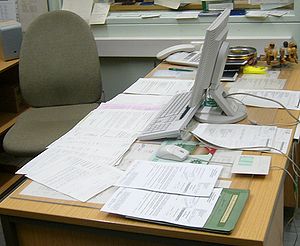All Things Financial Planning Blog
January 19, 2011 by
Chip Workman, CFP®
Behavioral finance has been around for quite some time, but seems to be gaining lots of steam in the popular press, which tells me more and more people are interested in learning about the brain’s often cantankerous relationship with money. The results of this trend are both encouraging and troubling.
At its best, behavioral finance can teach us to stop focusing on chasing returns and use that energy to understand why we’re wired to make poor financial decisions, how to manage our reactions to emotional investment events and create less stressed, more successful investors who understand their financial goals and how to achieve them.
I’m a firm believer in dealing with that which we can control. We can’t control the markets, but we can control how we react to their ups and downs, how much our investments and related advice costs and how we spend and save. Given that, this shift in focus is a move in the right direction and a trend which I hope continues.
So, what’s troubling me? Well, the financial services machine is starting to pay attention to this phenomenon. Without naming names, large wirehouses and other institutions are adding behavioral finance specialists to help them understand what this means to their business model. … In a recently released video, one of these new teams explained how they were using what they know about behavior to build products to fit various personality styles and soothe whatever the prospective client fears most. … It might appease them now, but will likely cost them dearly in the long run.
This seems to be a continuation of an increasing trend in society to always find the most immediately gratifying solution while ignoring real problems. …
…Increased interest in behavioral finance allows for spreading the advances we’ve made in understanding how we process financial decisions. Using it for anything other than creating better educated, more disciplined investors is a misuse of these tools and only enhances these damaging effects.
The goal of good financial planning and advice is not just to put the client at ease about whatever recent headline or crisis has them most concerned. …While a frank and honest look at where one stands can be stressful and unsettling, having a path that will guide you towards a realistic expectation of success is the ultimate de-stressor.
We should, of course, continue to explore the science of behavioral finance. It is vital that we all understand the importance of the self-imposed roadblocks to improving our financial health. But, responding to those results with a quick-fix is the wrong approach. As with all health-related issues, skip the miracle cures for the tried and true methods to a long and healthy life.

Chip Workman, CFP®, MBA
Lead Advisor
The Asset Advisory Group Cincinnati, Ohio
 Image via WikipediaNot only do professionals judge their own organizational habits, but over half (53%) surveyed admit to thinking negatively of their coworkers with messy desks. In fact, professionals who see a colleague's cluttered workspace reportedly assume that person must be lacking in other aspects of his or her job (40%) or take it one step further and have a lower overall opinion of this colleague (13%), the news release said. However, some are more forgiving and believe the coworker is simply overworked and doesn't have time to clean up (33%).
Image via WikipediaNot only do professionals judge their own organizational habits, but over half (53%) surveyed admit to thinking negatively of their coworkers with messy desks. In fact, professionals who see a colleague's cluttered workspace reportedly assume that person must be lacking in other aspects of his or her job (40%) or take it one step further and have a lower overall opinion of this colleague (13%), the news release said. However, some are more forgiving and believe the coworker is simply overworked and doesn't have time to clean up (33%).  Image via WikipediaAmericans have the best of intentions to organize their desk or workspace (45%), computer files (36%), or email (28%) but for various reasons never get around to it. The biggest challenge seems to be deciding what goes and what stays. Nearly half (46%) have struggled with prioritizing what should be saved or thrown away, while others claim finding the motivation to get the job done (43%) or having the right organizational tools (27%).
Image via WikipediaAmericans have the best of intentions to organize their desk or workspace (45%), computer files (36%), or email (28%) but for various reasons never get around to it. The biggest challenge seems to be deciding what goes and what stays. Nearly half (46%) have struggled with prioritizing what should be saved or thrown away, while others claim finding the motivation to get the job done (43%) or having the right organizational tools (27%).
























